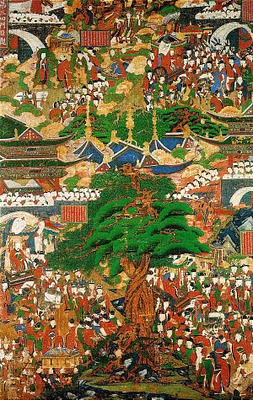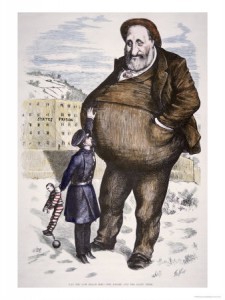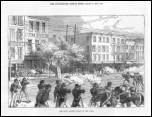May 10/17, 2011

It’s often called Buddha Day, or Buddha’s Birthday, but it’s far more than that. Vesak is a celebration of Buddha’s birth, his life, his path to Enlightenment, and his final reaching of Nirvana.
Around 563 BC, in the foothills the Himalaya, the pregnant wife of a wealthy prince left her home to deliver her baby in her father’s kingdom, as was the tradition. But along the way she stopped in a garden and beneath the shade of a sal tree, she gave birth to the boy Siddhartha. This park, on what is now the border of India and Nepal, is called Lumbini, Sanskrit for “the lovely”.
His mother died immediately after his birth. Despite the loss of his mother, his father the prince went to great trouble to shield him from all human misery and ugliness. He was given everything he could want, and was kept a safe distance from the suffering of the outside world.
“I was delicate, most delicate, supremely delicate. Lotus pools were made for me at my father’s house solely for my use; in one blue lotuses flowered, in another white, and in another red…My turban, tunic, lower garments and cloak were all of Benares cloth. A white sunshade was held over me day and night so that I would not be troubled by cold or heat, dust or grit or dew.”
At age 29 Siddhartha chose to venture outside the castle property to meet his subjects beyond. Before the excursion his father secretly ordered every sick, homeless, and old person in the village to be removed from his son’s view. But on his journey, Siddhartha chanced upon an elderly man–the first of Siddhartha’s Four Encounters.

Intrigued and disturbed by the sight of the old man, he planned subsequent trips to explore life outside the carefully-orchestrated castle. For the first time, Siddhartha witnessed disease in the form of a severely ill man. On his third trip he saw death in the form of a corpse. His charioteer gave him a crash-course in life’s harsh reality: all grow older, grow sicker, and die.
Trying to make sense of the desperation, Siddhartha made his fourth encounter–with a man who at once seemed to have the answers of the world and yet owns nothing. He’s an ascetic.
Siddhartha chose to flee from his father’s kingdom. He renounced his father’s materialism and his worldly connections–leaving his wife and their newborn son–to learn the ways of asceticism.
Siddhartha became a common street beggar for his sustenance, but he was easily recognized as the wealthy prince. He traveled further, studying under two ascetic masters, one after the other, but was ultimately unfulfilled with each of their teachings.
With five companions he took asceticism to a new level, reducing his food intake to little more a nut or leaf per day. For six years he lived the life of an ascetic.

“My body reached a state of extreme emaciation. Because of eating so little my limbs became like the jointed stems of creepers or bamboo; my backside became like a buffalo’s hoof…”
In the end, he was so weak, he nearly drowned in a river while trying to wash.
Lying there he heard a boat pass, with two musicians on board. One told another, inspecting his instrument, “If you tighten the string too tight it will snap, but if it is too loose, it will not play.”
Siddhartha realized that neither extreme asceticism nor materialism is the path to enlightenment. He recalled falling into a meditative state as a child, as close as he’d ever been to Enlightenment. In order for his mind to reach such a state again, he must nourish the body. His five companions desert him, convinced that Siddhartha has lost his willpower. But at that moment a young girl named Sujata arrived and offers him milk-rice.
Sitting beneath a pipal tree, Siddhartha made a solemn vow:
“Let only skin, sinew and bone remain, let the flesh and blood dry in my body, but I will not give up this seat without attaining complete awakening.”

After 49 days of meditation Siddhartha reached Englightenment. From that moment on he became Buddha, or the ‘Awakened One’.
Buddha spent the rest of his forty-five years passing on wisdom to his disciples, including the Noble Truths and the 5 Precepts, before reaching the final state of Nirvana, when his soul left his body.
Buddha’s 5 Just Say No’s
Just Say No to:
Killing
Stealing
Sexual misconduct
Lying
Drugs (intoxicants)
Buddha also rejected the ways of the caste system, as well as religious ritual for ritual’s sake.
Vesak comes from the word Vaishakha, the second month of the Hindu calendar. Buddha’s ‘Birthday’ is celebrated on the full moon of Vesak, usually in May.
It is not a holiday of wild abandon, but of joy, introspection, and spiritual exploration.
“The Buddha showed us that advancement in this world and the next could be achieved by appreciating what is good. The policy of the government is to steer the country to the correct path by adhering to the Dhamma. In doing so our responsibility is to tolerate other opinions and act with loving kindness.
As the Buddha has taught: “Be alert; do not idle. Follow the law of virtue. He who is virtuous lives happily both in this world and the next”
— President of Sri Lanka, Vesak Day message, 2008
![]()
In the Buddha’s footsteps…
http://orias.berkeley.edu/visuals/buddha/LIFE.html#garden%20of
http://www.festivalsofindia.in/budhpurnima/
http://www.colombopage.com/archive_08/May18154105JV.html




















 “Zoroastrianism is the oldest of the revealed world-religions, and it has probably had more influence on mankind, directly and indirectly, than any other single faith.”
“Zoroastrianism is the oldest of the revealed world-religions, and it has probably had more influence on mankind, directly and indirectly, than any other single faith.”